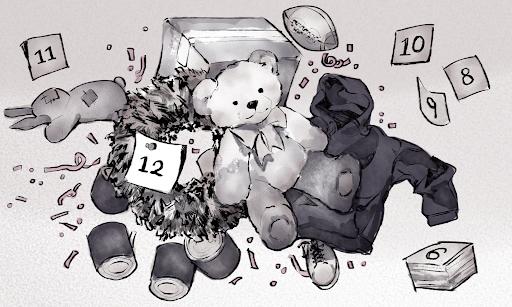
By Zander Sherry
Charity programs and service projects rely heavily on donations and volunteer work from members of local communities. Rises in employment give people enough financial stability to give back to their community, but it’s important to note that the idea of charity does not hold the same meaning to everybody. Benevolence, kindness and the generosity of one’s heart are important values, but financial crises and the instability of our economy remind us how important it is to work with and sustain the communities that need our continuous support. It’s not as much of a courtesy as it is a necessity that service programs and organizations receive help.
The holidays give much sentiment to charity, and as a result, programs for organized social services increase in engagement. With heavy amounts of consumerism during the holiday season, this time of the year is when most charities market their initiatives and receive donations. This has an impact on the thousands of people that rely on homeless shelters and nonprofits throughout the country, who require support year-round. Much of the efforts that come around during the winter time are temporary, and don’t hold up in the long run, as the same amount of attention isn’t given to these organizations in other times of the year.
In order for nonprofits to be sustainable, and to therefore uphold their mission, they need continuous funding and support from individuals who care for social services. The problem comes from the ‘season of giving’ and the advertising of these programs, to make charity seem like nothing more than a good deed to act on once a year.
Charity is not to be seen as a gift of one’s heart to a less fortunate benefactor or to make individuals feel better about themselves, but rather an integral part of public benefit that contributes to financial stability within your own community. It is important to maintain this strive for financial stability to better help the needs of unhoused and underprivileged people.
Most non profit organizations rely heavily or entirely on grants and donations so it would make sense that the holidays, in which Americans are willing to spend hundreds of billions of dollars, are a good time for these projects to market themselves in a way that will attract the most amount of funding.
Holidays are an important way to get companies or schools to support charities. Food and toy drives are attractive to many people invested in holidays, but putting a limited amount of time on these only adds to the issue. Drives are only advertised once a year, often giving limited amounts of time or goals in quantity to fulfill a makeshift quota for these nonprofits, meaning the companies don’t get nearly enough support throughout the rest of the year.
You could argue that setting these time limitations are helpful in quickly getting donations in before people lose the sense of holiday giving, but the issue still remains that people don’t feel as urged to donate throughout the rest of the year, and companies are not as willing to campaign these initiatives.
Seasonal programs like the Marine Toys for Tots are able to push for donations and work with corporations to receive a rush of support during Christmas time and use the already booming holiday market to advertise their own campaigns. Initiatives such as Giving Tuesday push for brands and individuals to give back, amidst the large amounts of spending that goes into holiday commercialism.
While these intentions should never go unappreciated, they still apply to only a portion of the year and are a part of the problem tying into consumerism and the social phenomena of the holiday season.
People tend to be more giving during the holidays, and whether it’s because of the popularization of charity, or the feelings associated with generosity, “giving back” should not be a temporary effort.
Giving gifts to your friends and loved ones is not the same as donating to your local charity or seeking ways to actively help your community. Many of the organizations that receive a boost in support during the winter are organizations responsible for providing necessities to impoverished communities. Turning the idea of a necessity into a temporary thing can be detrimental to the ones in need. Without full, year-round support for these organizations, the prospect of charity starts to be seen through the lens of a consumer.





